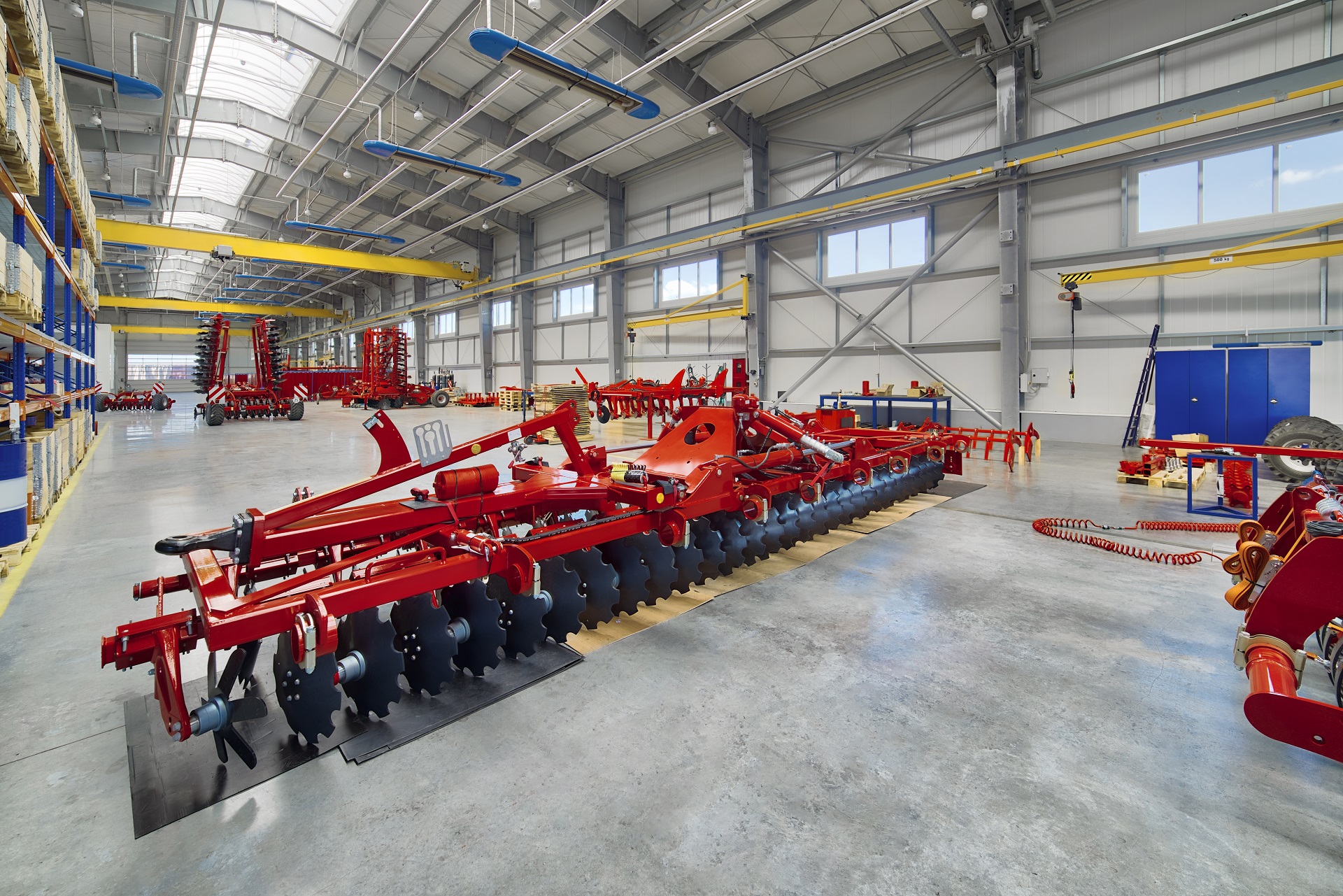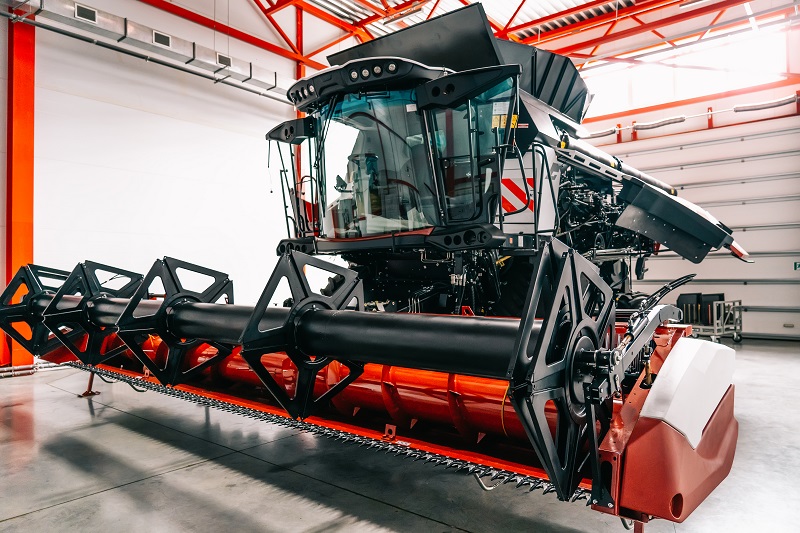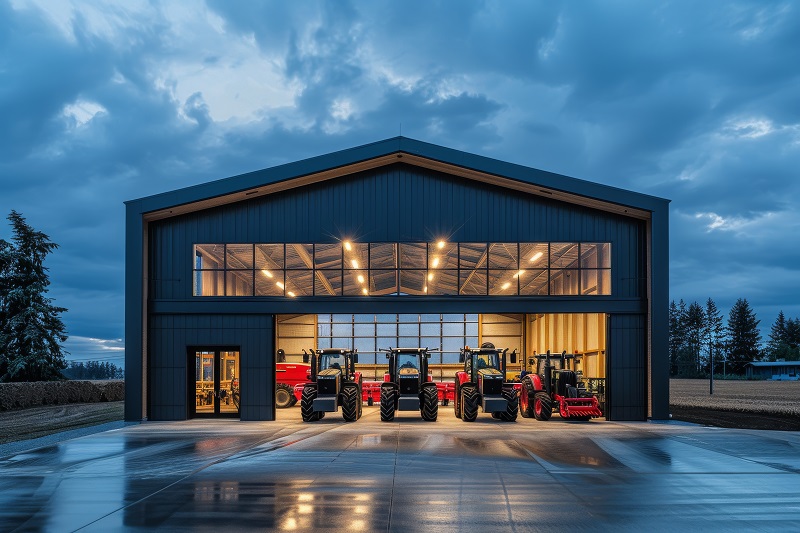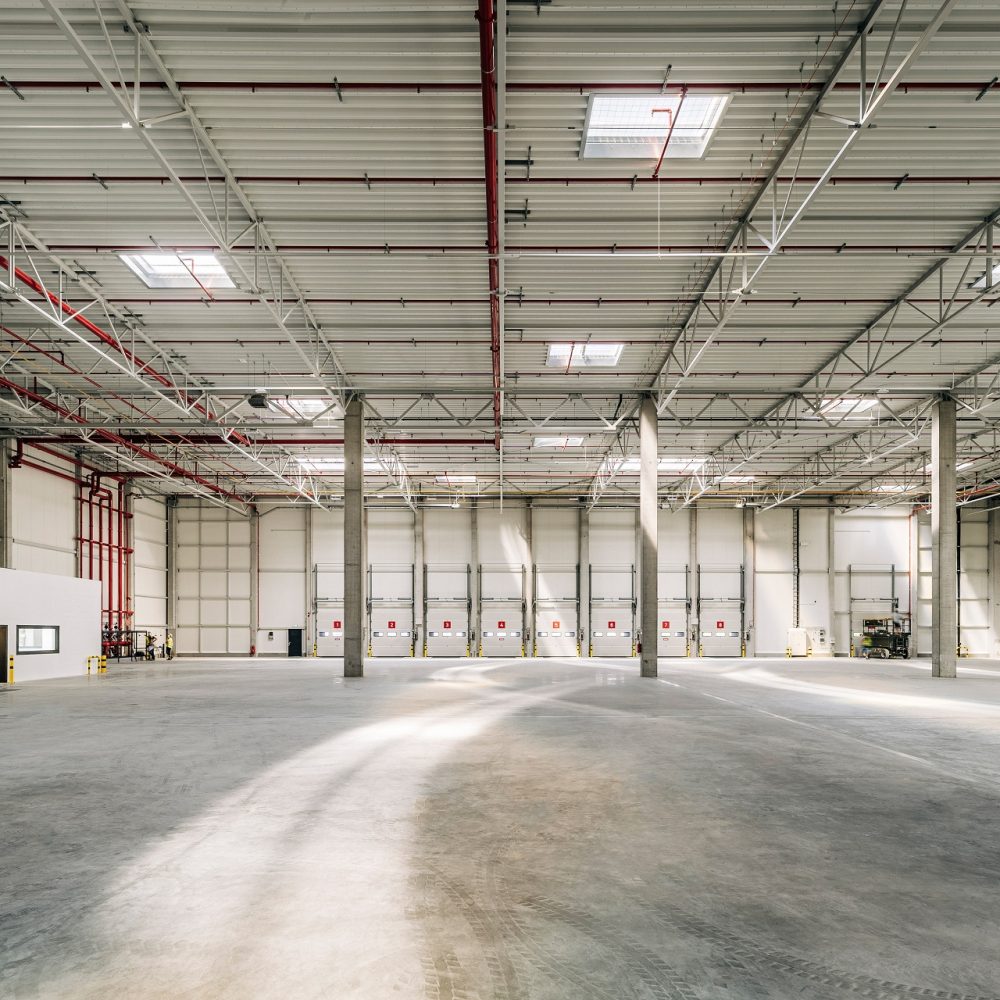
The production structure of agriculture in Poland is changing. Since our country joined the European Union, there has been an accelerated process of farm consolidation, and many innovative solutions are being introduced to improve work in the field. Modern agricultural halls are being built on Polish farms, which serve not only as agricultural warehouses for harvested crops, but also as facilities for storing agricultural machinery in winter. Which agricultural machinery hall design will work best?
Statistics show that the number of farms fell from 1.5 million to 1.3 million between 2010 and 2020. At the same time, the average area of agricultural land has increased from 9.8 ha to 11.1 ha during this period. The concentration of production resources entails changes in the organisation of agricultural work, which is becoming increasingly automated. Modern machinery such as tractors, harvesters, forage harvesters or sprayers are almost compulsory equipment on farms today. The value of such vehicles is enormous, so they require proper maintenance during the short and intensive season, as well as proper storage, preferably in an agricultural hall, during the winter shutdown.
Preparing agricultural machinery before winter
The productivity of agricultural work largely depends on the condition of the machinery used on the farm. The sowing and harvesting season is short in Poland, so any major failure of a tractor, seed drill or combine harvester during this time can expose the farm owner to heavy losses. What will help in the long trouble-free operation of machines? Certainly their regular servicing and ongoing repair of minor faults. It is also particularly important to carry out a more thorough service once the field work has been completed and before parking the vehicles for the next few months. This type of periodic inspection should always be preceded by a thorough cleaning and drying of the vehicle. Such activities have another advantage – in spring the vehicles will be almost immediately ready for use.
But in keeping machinery in good working order, storing vehicles in the winter in the right conditions is also crucial. The right ones, that is?
Agricultural machinery sheds – is this the only solution for storing vehicles?
By far the best solution for storing special agricultural machinery over the long term is indoors, such as garages, farm buildings or agricultural warehouses. However, if this is not possible – and it is not difficult with such large vehicles – at least a roof and a hardened, preferably concrete, surface should be provided. The vehicle is placed under such a shelter with a slight slope – it will be easier for the moisture to drain away, and blocks or other supports on which to place the vehicle should be used, this will help relieve the strain on the tyres. A common mistake is to cover machines with tarpaulins or plastic sheeting and leave them that way for long periods. Why should this not be done? This impedes ventilation and the ability to evaporate water from the substrate, and excessive moisture that settles on the vehicle will significantly increase the risk of corrosion.

Completely different conditions for storing agricultural machinery and vehicles are created by enclosed facilities, preferably when these are purpose-built farmers’ halls. More and more of these are being built in Poland. They protect vehicles from the direct effects of weather and moisture, and are also very useful when the host often carries out minor repairs and the weather outside is not favourable.
What are agricultural halls made of?
Halls built for the agricultural industry can vary in design and different materials can be used in their construction. Which one you decide on depends firstly on the purpose of the hall, i.e. what function it will perform, but also on the planned size of the facility. Small outbuildings tend to be brick-built, while for large farms and extensive fleet of machinery, it is increasingly common to build steel halls. For agriculture, this is a good and proven solution. The steel construction of agricultural halls allows buildings of almost any size to be built, and buildings can be constructed in a modular design, meaning that they can be easily extended in the future to meet changing needs. In the middle of the agricultural machinery hall, it is worth planning a service area, including an overrun channel for convenient vehicle servicing.
But in addition to the construction itself, it is also extremely important to equip the halls with the right system installations: ventilation, heating or lighting – different requirements will be placed on warehouses for storing crops and others on livestock buildings or cow milking parlours.
Steel halls for agriculture – not just storing machinery
Steel halls have a wide range of applications on the farm. Regardless of their purpose, however, they all have one thing in common – they protect property, livestock and crops from weather elements such as wind, rain or snow, but also low temperatures and excessive moisture.

They are therefore ideal as agricultural storage facilities for grain and hay, as well as for vegetables and fruit ensuring the right conditions inside the hall for harvested crops to survive the long winter months in good condition. But halls for farmers are also livestock buildings for pigs or poultry. In this case, the design of the building should take into account all parameters related to the evacuation requirements for animals.
Construction of an agricultural hall? Only with a proven general contractor!
When deciding to build a hall for agriculture, it is worth choosing a proven contractor. At Commercecon, we have more than 20 years of practical experience in construction, but also in the design of facilities for very different purposes. The knowledge we have gained allows us to carry out each project with a view to saving investors’ time and minimising the construction cost. An experienced team and a wide range of machinery mean that our turnaround times are short, we can even close in a few weeks for small structures.



